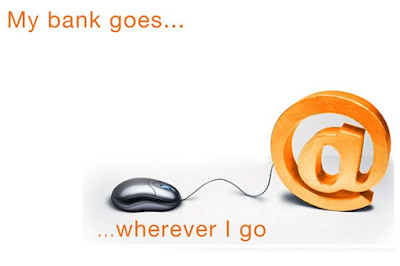Introduction
of Information Technology-Act of 1999 under
banking
sector reforms gave new dimensions to the Indian bankingindustry.
ATMs, Smart cards, Internet banking,
Tele banking, etc.INDIA has
transformed the banking structure, business process and also the work culture and human
resource development. The banks in India have started using electronic and
telecommunication networks for providing a wide range services. The various new
technologies that are use in the banks are explained below:
Introduction
of Information Technology-Act of 1999 under
banking
sector reforms gave new dimensions to the Indian bankingindustry.
ATMs, Smart cards, Internet banking, Tele banking, etc.INDIA has transformed the banking structure, business process and also the work culture and human resource development. The banks in India have started using electronic and telecommunication networks for providing a wide range services. The various new technologies that are use in the banks are explained below:
1)
Virtual Banking: It includes providing of banking and related services through
extensive use of IT to the customer. The services are delivered to the
customers by depending only on IT. The most important types of virtual banking
services are
Automated
Teller Machines (ATMs), electronic fund transfer,
phone-banking,
credit card, debit card, smart card, internet
banking
and so on.
2)
ATMs (Automated Teller Machines): ATMs are self service vendor machine that
help the banks to provide all timebanking services to their customers at
convenient places without visiting to the bank premises.
3)Debit
Card: It is a kind of prepaid card with some stored value. A Personal
Identification Number (PIN) will be issued to the customers for using the debit
card. It can be used at all outlets that accept, such cards for payments. In
this case, the Transaction amount is
debited to the bank account of the customer. Debit card does not permit
a customer to spend over and above his cash balance in the bank.
4)
Credit Card: It enables a customer to purchase goods and services within the
prescribed limits without making cash payments. The main difference between a
credit
card and debit card is that while credit card is a 'post paid', the latter is
'pre-paid'.
5)
Point of Sale (PoS): The PoS terminal is a machine that Facilates transactions through swipe of a card in an
online environment. Merchant business establishments operate point of sale in
their premises in order to accept plastic cards. The PoS terminals facilitate
electronic funds transfer. PoS system identify the cardholder and check whether
the customers account has sufficient funds to cover the purchase.
6)
Door Step Banking: This means banking services and products made available to a
customer at his place of residence or work. Under this system, there is no need
for the customer to visit the branch for getting services or products from the
bank.
7)
Internet Banking: It is also called on-line banking where the traditional
banking services are provided through the internet. Internet banking is a
product of e-commerce in the field of banking and financial services. Internet
banking enables the customers to open accounts, pay bills, know account
balances, forward loan application, view and print copies of cheques , transfer
funds, stop payments, etc. Different banks have different levels of such
devices offered, starting from low level. where only information is provided to
high level where online transactions are
made possible.
8)
Mobile banking: It is an extension of internet banking. It gives everybody with
a mobile phone to access banking services, irrespective of their location. In this
system, a customer can access his account details on a mobile phone by using
the Short Messaging Service (SMS) technology. It provides many services such as
account balance, mobile alerts :about credit card or debit card transactions,
mini account statement and so ON.
9)
Tele-banking: It is another form of electronic banking through which banking
services or products are rendered through telephone to its customers. It is a
24 hour banking facility to the customer. It is based on the voice processing facility
available in the computers of bank.
10)Electronic
Fund Transfer (EFT): It is an easy and speedy mechanism to facilitate the
transfer of funds from one place to another. It enables the customers to
transfer money instantly from one bank account to another one of the same or
another customer, from one branch or the other of the same bank or a
different
bank not only within the country but also within other countries.
11)
Electronic Clearing Services (ECS): It is non-paper based movement of funds. It
consists of: Electronic Credit Clearing
service is a reliable device used
for
bulk and repetitive credit-push payments such as salary, pension, dividend,
commission, IPO refunds, interest, etc.Electronic Debit Clearing Service was
introduced to facilitate the payment of credit-pull transactions such as
Payment of utility bills, insurance premium and repayment of loan emi(easy
monthly installment).

